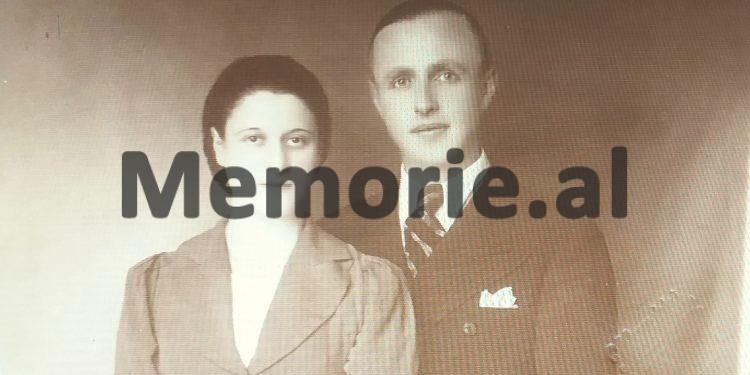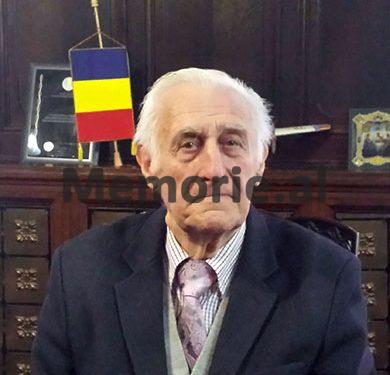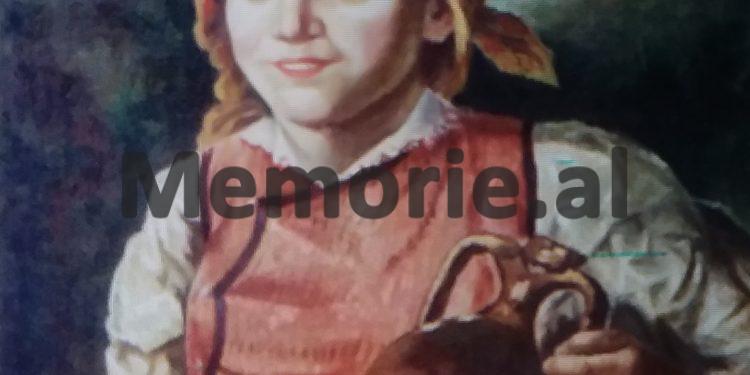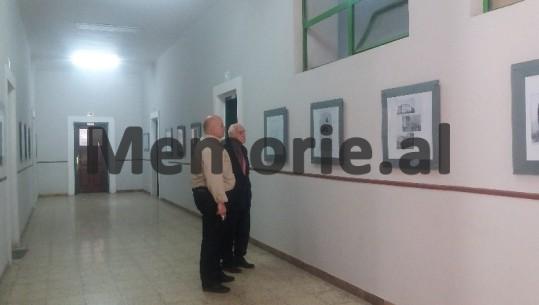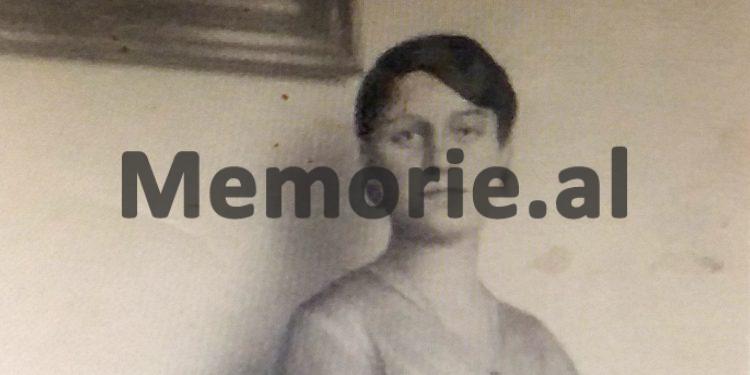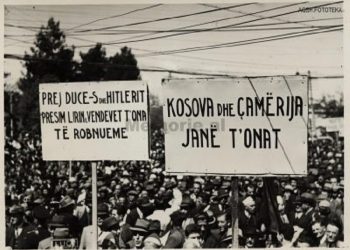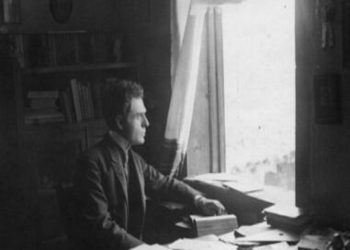Dashnor Kaloçi
Memorie.al publishes the unknown story of one of the first painters in Albania, Çezarina Daragjati Canco, sucker of one of the richest and noblest aristocratic families of the city of Shkodra, who after studying in the city of Dubrovnik, returned to the city of birth and received private lessons from two great painters, Kol Idromeno and Simon Rrota. The testimony of his son, 80-year-old Zhani Cano, about the story of his mother, who was tortured to death by the State Security in 1947, her brother, Simon, and who throughout the communist regime of Enver Hoxha refused to painted and exhibited no picture of socialist realism…
My mother Çezarania Daragjati, who had studied in Dubrovnik, Croatia and had taken private lessons for six years in the city of Shkodra from the two great colossi of Albanian painting, Kol Idromeno and Simon Rrota, did not let go of the brush until the end of her life. A few days before she passed away, at the beginning of 1991 when she was 81 years old, she turned to me and said: “Jean, I will make a bouquet of sunflowers” and after that she immediately opened easel and prepared oil paint brushes. She remembered that she had the strength to work as in the previous years in her youth, but as soon as she put the first colors on the canvas, she stopped working and told me that she would continue that picture one more time and left the easel open. “But she could not continue that newly started job, because only a few days later she passed away.” The man who speaks and testifies for Memorie.al, is 80-year-old Zhani Canco, former painter-architect of Kinostudio “Albania Today”, graduated in Bucharest, Romania, who tells the whole story of his mother, Cesarina Daragjati (Canco) one of the first Albanian painters from the city of Shkodra, who, although he did not let go of the brush until the age of 81, refused to exhibit during the period of socialist realism.
The Daragjati family
Cezarina Daragjati was born in 1910 in a well-known family of citizens from Shkodra, who at that time were engaged in trade and lived somewhere at the beginning of the Fushë-Çelë road, which was considered one of the most beautiful roads in that city built by the Austrians. Cesarina’s father, Gaspër Daragjati, after graduating from Istanbul, returned to the city of Shkodra and opened a commercial activity from which he derived considerable income. While his wife and at the same time Cesarina’s mother, was called Angje and was the daughter of the well-known tribe of Dedëvukaj, better known by the grandfather of Shan Deda, who had participated at the head of the Shkodra representation in the League of Prizren. Caesarina had two other younger sisters, Agetina and Domenica, as well as two brothers, Simon and Guljelmin. Since Gaspër Daragjati died very young, the burden of the family fell on his wife, Angja, who took care not only of raising the children, but also of their education. In this regard, Cesarina’s son, Zhani Canco, testifies: “My mother’s brother, Simon Daragjati, after receiving his first lessons in his hometown of Shkodra, went to Italy where he finished high school in the city of Bari… He then gained a right to study and went to Paris, where he graduated with honors in Economics. After graduation, Simon Daragjati returned to his hometown where he continued to engage in commercial activity just like his father once did. Being from a rich family with anti-communist convictions, from the beginning of 1947 Simoni was arrested by the State Security and died under torture in one of the improvised cells of the Internal Branch of the city of Shkodra. While Caesarine’s other brother, Guljelmi, who had completed high school with Simon in the city of Bari, then continued his higher studies and graduated in Economics in the city of Turin. Around 1943, Guljelmi returned to the city of Shkodra where he continued to deal with the commercial activity of the family, being a representative of the Italian beverage company “Martinirosi”. At the end of 1944, Guljelmi left for Italy together with his Italian wife who was expecting to give birth and never returned to Albania, thinking that he would end up like his brother, Simoni “, testifies Zhani Canco regarding the origin and family of his mother, Caesarina.
Student with masters Idromeno and Wheels
Unlike what she had done with her two sons Simon and Gulejlmi whom she had educated in Economics in France and Italy, Angje Daragjati took care that her three daughters who had received their first lessons at the Stigmatine Sisters College in the city of Shkodra, to be educated at the famous Dubrovnik College in Croatia. After graduating from the college that was known and considered one of the most prestigious in the Balkans and run by Austrian nuns, Cesarina Daragjati and her two sisters returned to the city of Shkodra. With the return of the daughters, what stood out most to their mother was the inclination and talent that Caesarine had displayed for the drawings. In this regard, Zhani Canco testifies: “The tendencies for drawing, my mother, Cesarina, had received from the Austrian nuns during the school years at Dubrovnik College, where in the programs of that school, in addition to the drawing subject that was traditionally seen as a priority, as well as other subjects such as music and culinary arts. Of course, in addition to these subjects which were given a lot of priority in that school, other subjects of general culture such as literature, history, geography, etc. were developed there. After my grandmother Angje Daragjati was fully convinced of her daughter Cesarina’s inclinations towards drawing, she took it and went to meet the famous painter and sculptor from Shkodra, Kol Idromenon, who was also known as an architect. and quite a neat photographer. The great master Idromeno after seeing the drawings of Caesarina, took her to the test and very quickly established the conviction for her talent. After that, he agreed to give her painting lessons privately, seeing in Cesarina a talented girl with a future in the beautiful art of painting. Col. Idromeno devoted himself to her by bringing her various magazines and picture books as well as contemporary literature and methods of theoretical teaching. Thus, for almost two years in a row, my mother received drawing lessons from the great master of Albanian painting, who did not hesitate to openly express his satisfaction for the talent of his student. But after two years, my mother, Cesarina, was forced to leave her professor, because at that time the master Idromeno, had many requests from Shkodra families for the design of new apartments that began to be built at that time in that city. So unable to cope with the heavy workload, Kol Idromeno recommended to my grandmother that Cesarina continue painting with the other master from Shkodra, the famous painter, Simon Rrota, who had graduated in painting at the Academy of Fine Arts. Graz in Austria. Simon also welcomed Caesarina quite well, who for four years continued to study privately with the prominent master of Shkodra who, like Idromeno, highly valued the talent of his student. The period that she stayed with her teacher Simon Rrota, were her most productive years, because she had gained a lot of experience and in her works, she expressed the reality reflected with a lot of inner emotions of her soul from a real artist. In those years Caesarine realized some of her best works both in oil technique and in carbon drawings, which were highly appreciated by various painters of that time and significantly enriched the fund of her works. From her two famous professors, Idromeno and Rrota, Cesarina was introduced to the great colossi of Italian, French and English painting. At that time, by order of her professor of French language in the classical gymnasium of the city of Shkodra, the Frenchman Paul Guzhon, Cesarina realized many reproductions of the great masters of the French classical school such as Vigee Le Brun. Roza Boquer, etc. “, testifies Zhani Canco.
1945 – 1990 no paintings in exhibitions
Although she broke up with her professor Simon Rrota, with whom she studied for four years, Cesarina Daragjati continued painting again, working in her home. She had the pleasure of attending any painting school overseas. But even though she was not given the opportunity to study further, Caesarina did not for a moment give up her passion for painting and continued to work with the same pleasure as she once did in her youth. She continued her passion even after 1937, when she married Gjergj Canco, the former teacher of the Classical Gymnasium of the city of Shkodra, who encouraged her even more her passion for painting. With her husband Cancon, Cesarina lived in the city of Shkodra until 1945 and after that year they came and settled in Tirana, where Gjergji was appointed Director of the Technical School (Polytechnic “November 7”). After 1945, Caesarina was deeply saddened by the two severe blows suffered by her family with the tragic death of her brother, Simon, who was declared an enemy of the people, and the loss of her other brother, Guljelmi, who remained permanently outside Albania in Italy. Since then Caesarina has locked herself inside the house and never engaged in any kind of state work, thinking the evil shadow of the class war could cause her new problems. In this regard, the son, Zhani Canco, testifies: “She continued to paint again and some of her most prominent works are those of the portraits of her two parents, as well as the father-in-law (Zisi and Parashqevi Canco) of whom she loved and respected immensely. Also, from all her works in our family fund, we have been able to save about 40 works, where the most prominent are some portraits and serene natures with colorful flowers, which she has worked with a lot of love and looks like inside to them she has put something of her world. “Also, in our family we have preserved many reproductions of it by the great masters of the Italian, German, French and English classical school.”
Cesarina Daragjati continued to work on canvas and never took the paintbrush out of her hand even in the last years of her life, when she was in her eighties. In this regard, the son testifies: “A few days before he passed away at the beginning of 1991 when she was 81 years old, he addressed me saying: “Zhani, I will make a bouquet of the flowers of the sun” and immediately afterwards opened the easel and prepared the oil paintbrushes. She remembered that she had the strength to work as in the previous years in her youth, but as soon as she threw the first colors on the canvas, she stopped working and told me that she would continue that picture one more time, leaving the easel open. But she could not continue that work, because only after a few days she passed away “, the son remembers the last days of the life of his mother, Çezarina Daragjati, the famous painter from Shkodra, who, although she had received lessons from two the great masters and colossi of Albanian painting, Kol Idromeno and Simon Rrota, never exhibited in the period of socialist realism. Her dream came true only after the ’90s when her works were exhibited twice in different exhibitions and were received with great interest by both critics and many viewers.
March 8, 2003, Cesarina Exhibition at the Art Gallery
Cesarina Daragjati’s dream for a personal exhibition came true only after the ’90s when her works were exhibited twice in different exhibitions and were received with great interest by both critics and many viewers. Her first solo exhibition would open only on March 8, 2002 at the National Gallery of Arts in Tirana, which took place on March 8, International Women’s Day, organized by the Ministry of Youth, Culture and Sports in cooperation with National Gallery of Art. Thus, in one of the halls of this gallery was opened an exhibition entitled “My Changes” in memory of Cesarina Daragjati Canco, where in the presence of many art lovers, artists, famous painters and cultural personalities, the opening speech of that exhibition e held by the curator of the Art Gallery, Suzana Kuka Varvarica, who highlighted the role of Albanian women painters over the years. In one of the main halls of that gallery, 40 works of the famous painter from Shkodra Çezarina Daragjati were exhibited and in different halls were exhibited the works of other Albanian painters who lived and were present in that exhibition. Also, on the stand of this exhibition were exhibited some of the books of the famous painter from Shkodra and her work tools, such as brushes, easels and various paints, which were followed with interest by many visitors. / Memorie.al




